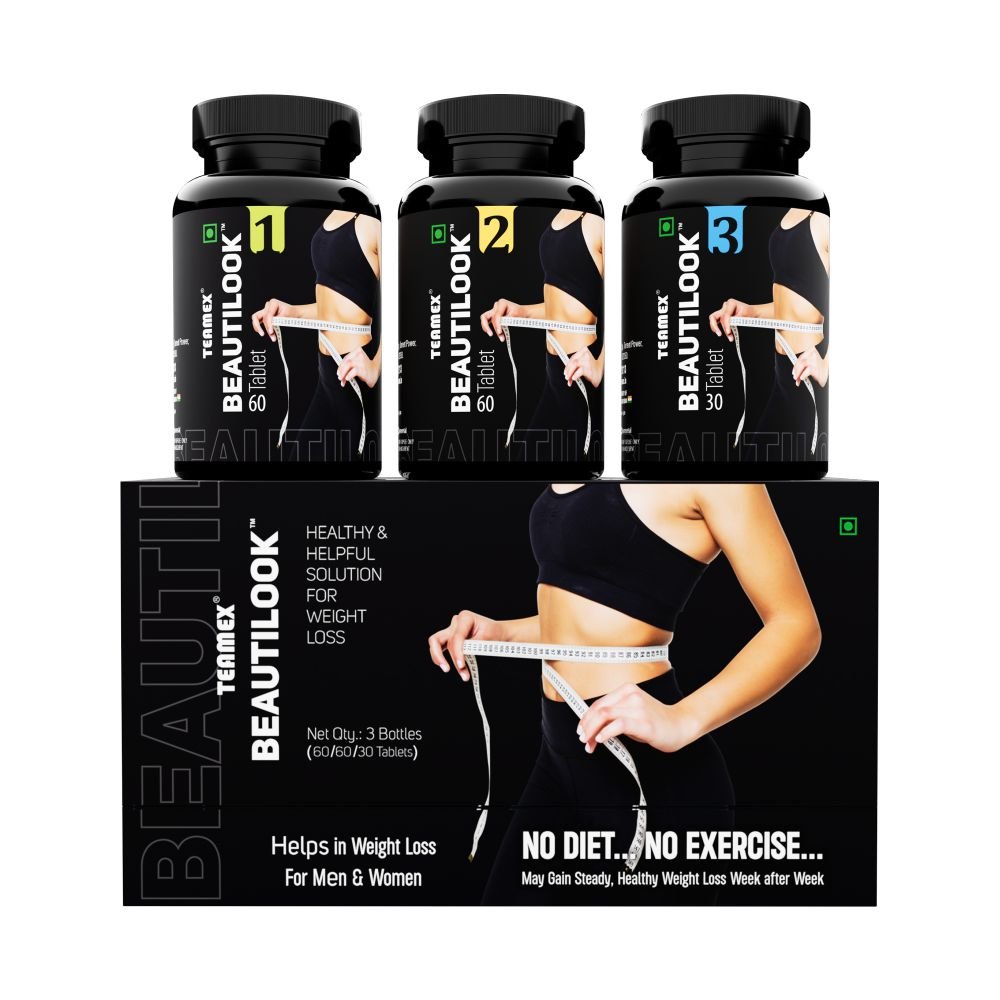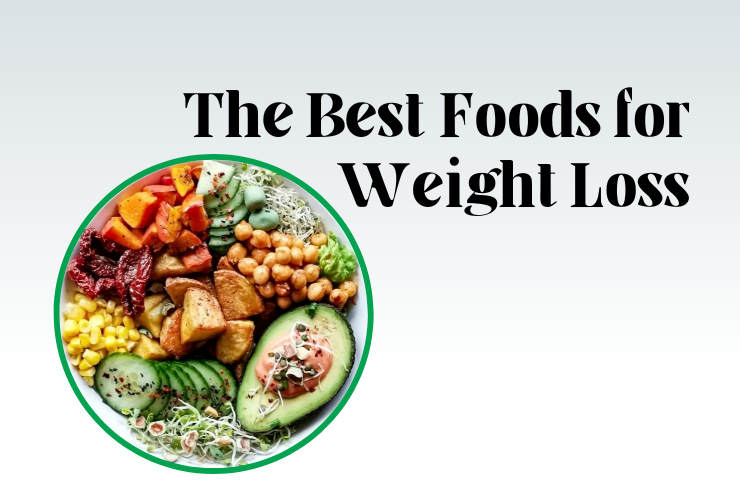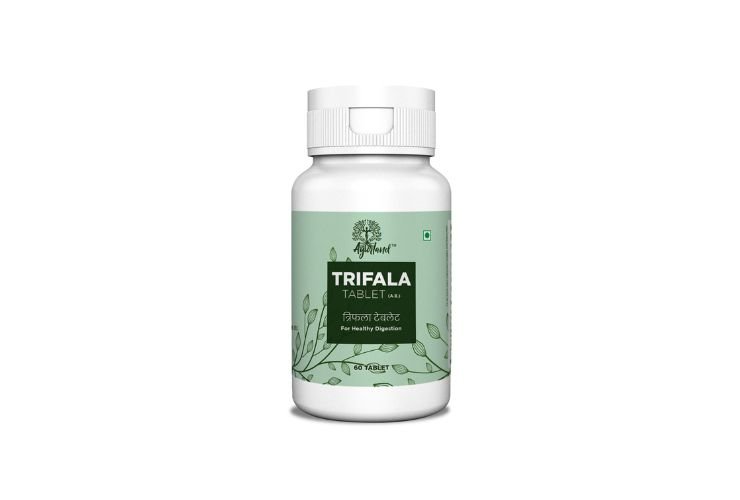

Table of Contents
In the pursuit of a healthier and leaner body, the foods you consume play a significant role. While there are no magical solutions to weight loss, certain foods can certainly help you on your journey to shed those extra pounds. In this article, we’ll explore the most weight loss-friendly foods that you can incorporate into your diet to achieve your fitness goals.
High-Protein Foods
Protein is an essential macronutrient that plays a crucial role in various bodily functions. Including high-protein foods in your diet can have several benefits, and there are numerous ways to use them in your daily meals. Here’s a comprehensive guide to high-protein foods:
Benefits of High-Protein Foods:
- Weight Management: Protein promotes a feeling of fullness, which can help control appetite and reduce overall calorie intake, aiding in weight loss and weight maintenance.
- Muscle Building: Protein is vital for muscle growth and repair, making it a cornerstone for athletes and those aiming to build or maintain muscle mass.
- Metabolism Boost: Protein has a higher thermic effect compared to fats and carbohydrates, meaning your body burns more calories during digestion, supporting weight management.
- Blood Sugar Control: Protein can help stabilize blood sugar levels, which is beneficial for individuals with diabetes or those looking to avoid blood sugar spikes and crashes.
- Satiety and Reduced Snacking: High-protein meals can help curb cravings and reduce snacking, promoting better control of calorie intake.
Top High-Protein Foods:
- Chicken Breast: Skinless chicken breast is a lean source of protein, low in fat and calories.
- Salmon: Fatty fish like salmon are high in protein and provide heart-healthy omega-3 fatty acids.
- Greek Yogurt: Greek yogurt is rich in protein and probiotics, aiding digestion.
- Tofu: A versatile plant-based protein source, tofu can be used in a variety of dishes.
- Eggs: Eggs are a budget-friendly source of protein and can be prepared in numerous ways.
- Quinoa: Quinoa is a whole grain with all essential amino acids and higher protein content compared to most grains.
- Lentils: Lentils are a plant-based source of protein and fiber, promoting satiety.
- Cottage Cheese: Low-fat cottage cheese is a protein-packed dairy option.
- Black Beans: These beans are rich in protein and fiber, supporting weight management.
How to Incorporate High-Protein Foods:
- Breakfast: Start your day with a protein-packed breakfast like eggs with spinach or Greek yogurt with berries.
- Lunch: Include lean protein sources in salads or sandwiches, like grilled chicken or tofu.
- Dinner: Opt for protein-rich main dishes such as salmon, lean beef, or a vegetarian quinoa bowl.
- Snacks: Choose high-protein snacks like cottage cheese with fruit or a handful of almonds.
- Meal Prep: Plan your meals to include a balance of protein, vegetables, and healthy fats for sustained energy and satiety.
Remember to consult with a healthcare professional or registered dietitian to determine your specific protein needs and dietary requirements. Incorporating a variety of high-protein foods can enhance your overall nutrition and support your health and fitness goals.
Fiber-Rich Foods
Fiber is an essential component of a healthy diet, and it plays a significant role in weight loss and overall well-being. This guide will help you understand the importance of fiber in weight loss, introduce you to top fiber-rich foods, and provide insights on how to make the most of them in your weight loss journey.
The Role of Fiber in Weight Loss:
- Appetite Control: Fiber adds bulk to your diet, making you feel full and satisfied. This helps control your appetite, reducing the likelihood of overeating.
- Digestive Health: Fiber aids in regular bowel movements and supports a healthy gut. A well-functioning digestive system is crucial for weight management.
- Blood Sugar Regulation: High-fiber foods can help stabilize blood sugar levels, preventing spikes and crashes that may lead to overeating.
- Calorie Reduction: Many fiber-rich foods are lower in calories, allowing you to eat more volume without excessive calorie intake.
- Cholesterol Management: Soluble fiber, found in some foods, can help lower LDL cholesterol levels, reducing the risk of heart disease.
Top Fiber-Rich Foods for Weight Loss:
- Legumes: Lentils, chickpeas, and black beans are excellent sources of fiber and protein.
- Whole Grains: Foods like quinoa, brown rice, and oats are high in fiber, providing long-lasting satiety.
- Fruits: Berries, apples, and pears are rich in fiber and natural sweetness.
- Vegetables: Broccoli, Brussels sprouts, and kale are among the many fiber-packed veggies.
- Nuts and Seeds: Almonds, chia seeds, and flaxseeds contain both fiber and healthy fats.
- Avocado: Avocado is a unique fruit rich in fiber and monounsaturated fats.
How to Incorporate Fiber-Rich Foods:
- Start with Breakfast: Add berries or sliced banana to your morning cereal or oatmeal.
- Snack Smart: Munch on carrot sticks with hummus or a small handful of almonds.
- Lunch and Dinner: Include a generous portion of vegetables or legumes in your meals.
- Replace Refined Grains: Opt for whole-grain options in bread, pasta, and rice dishes.
- Stay Hydrated: Drink plenty of water when consuming fiber to aid digestion.
How Fiber-Rich Foods Help in Weight Loss:
- Plan Balanced Meals: Incorporate fiber-rich foods in every meal to maintain fullness and avoid overeating.
- Control Snacking: Fiber-rich snacks can curb cravings and prevent unhealthy snacking.
- Regular Bowel Movements: A healthy gut supports efficient digestion and waste elimination, which can contribute to weight management.
Consult with a healthcare professional or registered dietitian for personalized guidance on your dietary needs. By embracing fiber-rich foods and understanding their role in weight loss, you can achieve better control of your appetite and contribute to a healthier lifestyle.
Healthy Fats
Healthy fats play a crucial role in a balanced diet and can significantly impact your weight loss journey. This guide will help you understand what healthy fats are, their importance, top sources, and how to incorporate them into your daily routine.
What Are Healthy Fats?
Healthy fats, also known as unsaturated fats, are essential components of a well-rounded diet. They provide essential fatty acids, support overall health, and are especially beneficial in a weight loss context.
Importance of Healthy Fats in Weight Loss:
- Satiety: Healthy fats help you feel full and satisfied, reducing the likelihood of overeating and snacking between meals.
- Energy: They are a concentrated source of calories, providing lasting energy throughout the day, which can prevent energy dips and cravings.
- Nutrient Absorption: Some vitamins (e.g., A, D, E, and K) are fat-soluble, meaning they require the presence of fats for proper absorption.
- Heart Health: Healthy fats, particularly monounsaturated and polyunsaturated fats, can lower bad LDL cholesterol levels and reduce the risk of heart disease.
- Hormone Regulation: Fats are essential for hormone production and can help maintain hormonal balance, which is crucial for weight management.
Top Sources of Healthy Fats:
- Avocado: Avocado is a rich source of monounsaturated fats, which are heart-healthy and can aid in satiety.
- Oily Fish: Salmon, mackerel, and trout are high in omega-3 fatty acids, which have numerous health benefits, including supporting weight loss.
- Nuts: Almonds, walnuts, and pistachios are packed with healthy fats, making them a convenient and satisfying snack.
- Seeds: Chia seeds, flaxseeds, and hemp seeds provide healthy fats, fiber, and a range of nutrients.
- Olive Oil: Extra virgin olive oil is an excellent source of monounsaturated fats and can be used in cooking or as a salad dressing.
Benefits of Healthy Fats:
- Improved Satiety: Including healthy fats in your meals can help control your appetite and reduce the desire to snack.
- Steady Energy: Healthy fats provide a sustained source of energy throughout the day, reducing energy fluctuations and cravings.
- Heart Health: A diet rich in healthy fats can support heart health by reducing LDL cholesterol and inflammation.
How to Incorporate Healthy Fats into Your Daily Routine:
- Cooking: Use olive oil or avocado oil for sautéing and roasting vegetables and lean proteins.
- Dressings: Create homemade salad dressings with olive oil, balsamic vinegar, and herbs.
- Snacks: Enjoy a handful of nuts or seeds as a satisfying snack between meals.
- Avocado: Add slices of avocado to salads, sandwiches, or as a topping for various dishes.
- Fatty Fish: Include oily fish in your diet a few times a week as a protein source.
Balancing your diet with healthy fats is essential for overall health and can enhance your weight loss journey by promoting satiety and providing a stable source of energy. Consult with a healthcare professional or registered dietitian for personalized guidance on incorporating healthy fats into your diet.
Low-Carb Foods
Low-carb foods are a key component of many successful weight loss strategies. This guide will help you understand what low-carb foods are, their benefits, options for weight loss, the concept of low-carb diets, and how to include low-carb foods in your daily routine.
What Are Low-Carb Foods?
Low-carb foods are items that contain a reduced amount of carbohydrates compared to typical foods. These foods are often favored in weight loss and various diets due to their potential to regulate blood sugar levels and promote fat loss.
Benefits of Low-Carb Foods:
- Weight Loss: Reducing carbohydrate intake can lead to reduced calorie consumption, aiding in weight loss. Low-carb diets have shown success in promoting fat loss.
- Steady Blood Sugar: Low-carb foods can help stabilize blood sugar levels, which can be beneficial for individuals with diabetes or those aiming to avoid energy crashes and cravings.
- Reduced Hunger: Protein and healthy fats, common in low-carb foods, promote satiety and reduce appetite, which can help control calorie intake.
- Improved Heart Health: Low-carb diets, when focused on whole and unprocessed foods, can improve cardiovascular health by reducing triglycerides and increasing HDL (good) cholesterol.
- Control Over Cravings: Low-carb diets may help curb sugar and carbohydrate cravings, making it easier to make healthier food choices.
Low-Carb Options for Weight Loss:
- Lean Proteins: Chicken, turkey, fish, and lean cuts of beef provide protein without significant carb content.
- Non-Starchy Vegetables: Broccoli, spinach, cauliflower, and kale are low in carbs and high in fiber and nutrients.
- Nuts and Seeds: Almonds, walnuts, and flaxseeds offer healthy fats and protein while being low in carbs.
- Avocado: Avocado is rich in healthy fats and low in carbs, making it a versatile addition to your diet.
- Berries: Berries like blueberries, strawberries, and raspberries are lower in carbs compared to many other fruits.
Understanding Low-Carb Diets:
Low-carb diets, such as the ketogenic diet and Atkins diet, emphasize reducing carbohydrate intake and increasing the consumption of protein and fats. These diets often focus on whole and unprocessed foods, but the level of carb restriction can vary.
How to Include Low-Carb Foods in Your Daily Routine:
- Plan Balanced Meals: Incorporate lean proteins, non-starchy vegetables, and healthy fats into your meals.
- Choose Snacks Wisely: Opt for nuts, seeds, and low-carb vegetables with dips as snacks.
- Read Labels: Pay attention to nutrition labels to identify carb content in packaged foods.
- Limit Sugar and Processed Foods: Reducing added sugars and processed carbs is key to a low-carb lifestyle.
Before embarking on a low-carb diet, consult with a healthcare professional or registered dietitian to ensure it aligns with your health goals and needs. Incorporating low-carb foods into your routine can be an effective way to manage your weight and improve overall health.
Whole Grains
Whole grains are a vital part of a healthy diet and offer numerous benefits for your overall well-being. This guide will help you understand what whole grains are, their advantages, and how to incorporate them into your daily diet.
What Are Whole Grains?
Whole grains are grains that contain all parts of the original kernel, including the bran, germ, and endosperm. This means they retain valuable nutrients and fiber, setting them apart from refined grains, which have had the bran and germ removed.
The Benefits of Whole Grains:
- Fiber-Rich: Whole grains are a significant source of dietary fiber, which supports digestive health, regular bowel movements, and can help manage weight by promoting a feeling of fullness.
- Nutrient-Dense: They are packed with essential nutrients like vitamins (B vitamins), minerals (magnesium, iron), and antioxidants that are beneficial for overall health.
- Heart Health: Consuming whole grains has been linked to a reduced risk of heart disease due to their ability to lower cholesterol levels, reduce blood pressure, and improve vascular health.
- Weight Management: The fiber content in whole grains can help with weight loss and maintenance by curbing appetite and promoting better control of calorie intake.
- Stable Blood Sugar: Whole grains have a lower glycemic index, which means they release glucose into the bloodstream more slowly, helping to maintain stable blood sugar levels.
How to Incorporate Whole Grains into Your Diet:
- Switch to Whole Grain Varieties: When shopping for bread, pasta, rice, and cereal, choose whole grain options. Look for labels that specify “100% whole grain.”
- Start Your Day Right: Opt for whole grain cereals or oatmeal for a nutritious breakfast. Add fresh fruits and nuts for extra flavor and nutrition.
- Whole Grain Snacks: Snack on whole grain crackers, rice cakes, or air-popped popcorn. Pair them with hummus, nut butter, or low-fat cheese for a satisfying snack.
- Whole Grain Sides: Substitute white rice or pasta with brown rice, quinoa, or whole wheat pasta in your meals.
- Baking with Whole Grains: Experiment with whole wheat flour in your baking to create healthier cookies, muffins, and pancakes.
- Mixed Grains: Combine different whole grains like brown rice, quinoa, and barley in dishes for added variety and nutrition.
By incorporating whole grains into your diet, you can enjoy their numerous health benefits, from digestive health to heart health. Aim to make whole grains a regular part of your meals to promote a well-balanced and nutritious diet.
In conclusion
incorporating healthy fats, low-carb foods, whole grains, and fiber-rich foods into your diet can support your weight loss journey and overall health. These nutrient-rich choices promote satiety, steady energy, and better blood sugar control, while reducing the risk of heart disease. Balancing these elements in your daily routine can lead to a more satisfying and nutritious diet.

